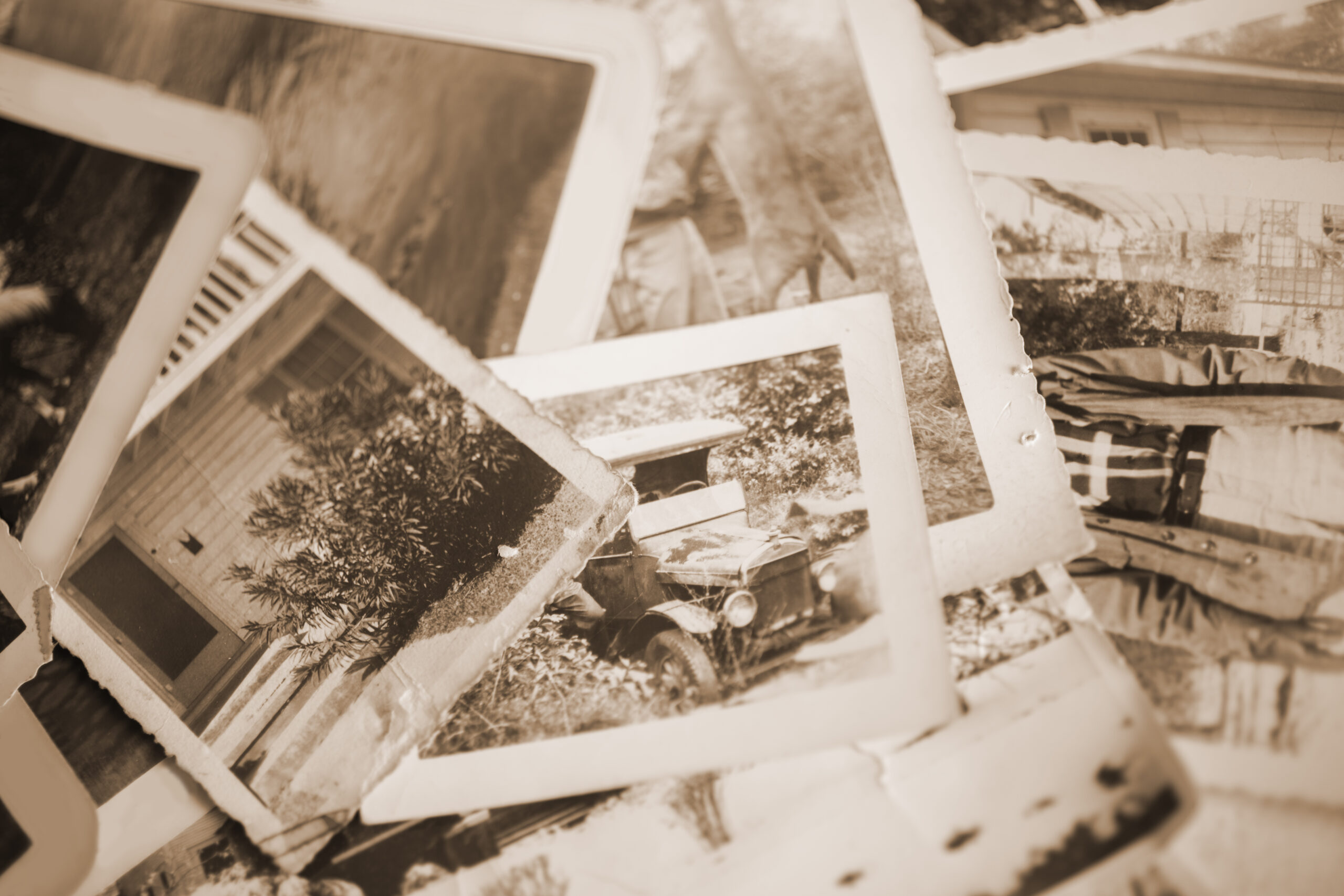The rest is photographs
An afternoon spent going through dusty old albums puts our columnist Jonathan Self in contemplative mood.


Every available surface in my study is covered in family photograph albums. Drifts of them block the door. Piles are balanced precariously on the club fender. The dogs have been forced to share their bed with my great-great-grandmother’s cartes de visite collection — hundreds of formal portraits of mid-19th-century European royalty — arranged in austere, leatherbound volumes.
After years of procrastination, I am attempting to put five generations of family photographs into some sort of order. Much of the material is of marginal interest. My grandmother had two spinster cousins living in genteel poverty who filled album after album with bad photographs of Sussex churches. My nanny, who trained dogs, horses and children, pasted photographs of her fourlegged (but, significantly, not two-legged) charges into old-fashioned scrapbooks. My father was a prolific photographer — he accounts for at least 10 albums — but what few images are in focus are generally of unnamed people and unidentifiable places.
My mother, on the other hand, rarely took out her camera; despite having an excellent eye, she stuck to photographing family and close friends and always added a caption: ‘The boys on the terrace after breakfast, Grand Hotel Bellagio. William’s sinus troubling him. 3rd May 1966’; ‘Peter, swimming, after our fight over his snoring. Loch Rannoch. 30th August 1970.’
There are, as you would expect, thousands of photographs of my relatives, posed and unposed, singly, in couples and en masse, on beaches, in gardens, at balls, hunting, playing tennis, playing cricket, in uniform, graduating, in fancy dress, kissing, hugging, smiling, frowning, arguing and, sometimes, in the case of younger members, crying. There are photographs of groups, mausoleums, battlefields, sea voyages, famous sights and mysterious landscapes.
"These albums are all that remains of so many lives, so many events, so many places that were once of such significance and which would now, otherwise, be forgotten"
Some of the albums were bequeathed to me; some I rescued from the dustbin. All were once prized possessions. It is no coincidence that people fleeing from disaster generally save their family photographs over anything else. You can replace a piece of jewellery, but not the only photograph of your late sister in existence. In some ways, family photographs may be the most significant thing we leave after we die, too — each album being a small, carefully curated monument to its subjects and its creator. I would know so little about most of my family — a few facts, a few (doubtless exaggerated) stories — were it not for these albums.
As I study the faces in the photographs, a great deal is often revealed: who they loved, how they lived, their relationships with each other and the world, what was important to them. Many of these albums are also, of course, familiar to me. In my childhood and youth, photograph albums were a form of entertainment to be taken out, examined and discussed during family visits and parties (not something that happens with snaps on phones). I am, therefore, no stranger to (distant) Cousin Alice’s coming out (1934), Aunt Dreda’s trip to Egypt (1953) or Uncle Bob’s Scottish golfing holiday (1982).
At the time, I was bored rigid — you don’t know what despair is until you have seen my cousin Imogen’s collected holiday snaps for the 20th time — but now I find myself by turns fascinated and amused, puzzled and saddened. Especially saddened, because these albums are all that remains of so many lives, so many events, so many places that were once of such significance and which would now, otherwise, be forgotten. Who am I fooling? I am not working at putting these photographs into any sort of order. I am just enjoying them.
Exquisite houses, the beauty of Nature, and how to get the most from your life, straight to your inbox.
After trying various jobs (farmer, hospital orderly, shop assistant, door-to-door salesman, art director, childminder and others beside) Jonathan Self became a writer. His work has appeared in a wide selection of publications including Country Life, Vanity Fair, You Magazine, The Guardian, The Daily Mail and The Daily Telegraph.
